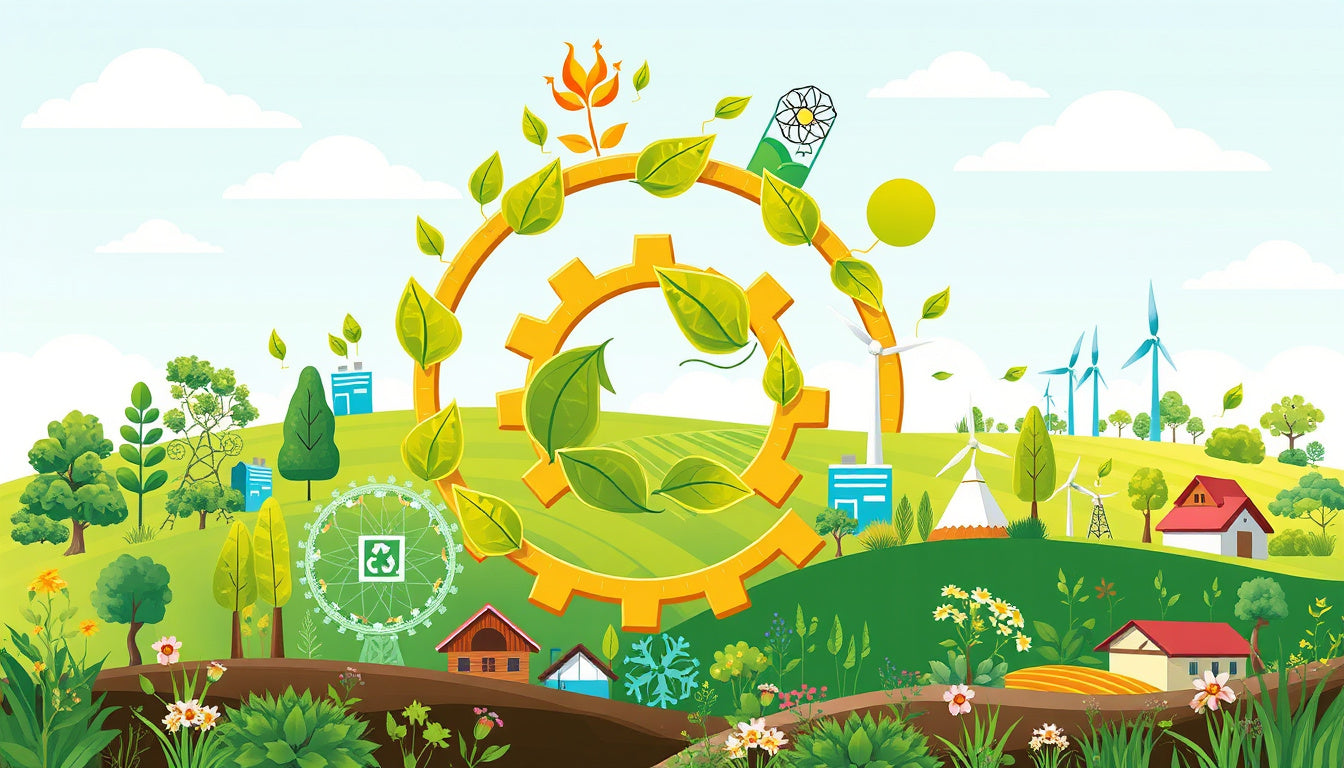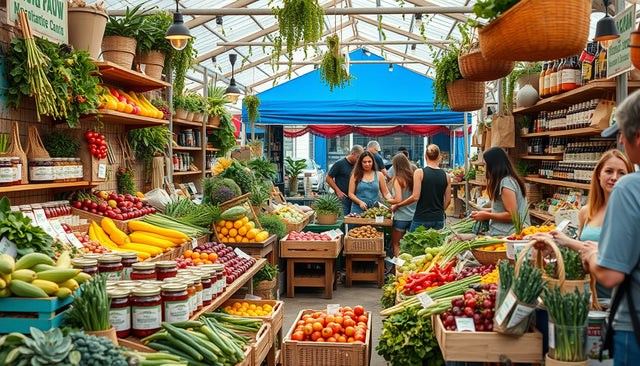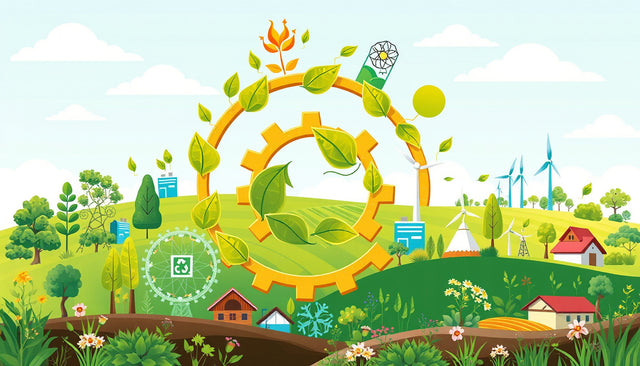How a Circular Economy Helps Cut CO₂ Emissions
Published: October 28, 2025 | By Chloe Williment | Sustainability Magazine
The Circular Economy and Net Zero Goals
A circular economy matters. It keeps materials active in a loop. This process cuts waste and slows pollution. It lowers emissions from factories and raw material work. Instead of the old take–make–consume–throw way, we now repair, reuse, redesign, and recycle. Each word links closely. Each part depends on its neighbor.
Key Benefits of a Circular Economy
- Waste Minimization: Recycling at a product’s end keeps materials in play. This method shrinks landfill piles and stops damage.
- Resource Conservation: Using fewer raw materials helps nature. It saves habitats and slows the loss of species.
- Better Product Design: At design time, a product earns most of its mark on the earth. Choosing smart design saves energy and cuts material use.
- Packaging Reduction: Today, an average European wastes about 190 kilos of packaging. Cutting down packaging lets us reuse and recycle more.
Didier Trebucq, UN Resident Coordinator in Georgia, tells us: “The circular economy is a win for people, the environment and the country… It builds greener jobs, stronger businesses, cleaner cities and healthier communities.” Each word in his quote links ideas closely, making the message clear.
Tackling Raw Material Dependence
Rising demand and limited supplies make raw materials sparse. In 2022, Europe used 14.9 tonnes per person. In 2023, imports created a €29bn gap. Recycling and reuse secure materials for climate tools like batteries and electric motors. This focus cuts price swings and supply risks through clear, tight connections.
Economic Opportunities and Job Creation
Circular choices can add 700,000 EU jobs by 2030. They drive new ideas and grow competitiveness. Consumers gain from sturdy, long-lasting goods that save money over time. Jonquil Hackenberg, CEO of the Ellen MacArthur Foundation, asks us to speed up focus on big areas that can work at scale. The words stick together like linked nodes in a clear tree.
Leading Corporate Circular Practices
- Cisco: Uses 25 Circular Design Principles. It aims for 75% circularity in new goods. This move saved $9 million by ending oil-based paints.
- Ingka Group (IKEA’s retail arm): Designs items to be fixed. It runs buy-back programs and stocks parts to last longer.
- Blenheim Palace & Mastercard: Use RFID cups that cut packaging costs in half. They saved 320,000 single-use cups from waste.
- Data Innovations: Accenture and Amazon Web Services build circular data lakes. These tools automate how we check and act on impacts.
- Batteries: CATL teams up with the Ellen MacArthur Foundation. They boost reuse and high-quality recycling.
- Fashion: eBay’s Circular Fashion Fund backs repair, resale, and textile reuse.
Each practice shows how close connections between ideas lessen emissions, halt material risks, and help eco-friendly growth.
Conclusion
A circular economy cuts CO₂ emissions. It reduces waste and builds tough supply chains. This method protects nature and adds economic and social value. It meets net zero goals. Governments, companies, and groups can lead the way. With tight links between every step, circularity guides us to a greener, fairer future.
Further Reading
- Infosys: How Much Energy Are Data Centres Really Consuming?
- Arcadis: How Data Centres Can Grow Strawberries with CO₂
- UN Climate Crisis Overview: Past Tipping Point Ahead of COP30
Source: Sustainability Magazine – your digital hub for industry-leading insights on sustainability, innovation, and corporate responsibility.
Design Delight Studio curates high-impact, authoritative insights into sustainable and organic product trends, helping conscious consumers and innovative brands stay ahead in a fast-evolving green economy.






















0 comentarios